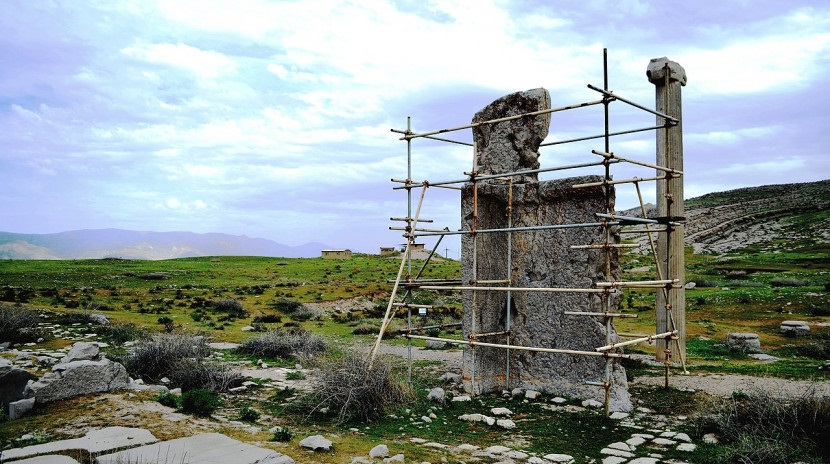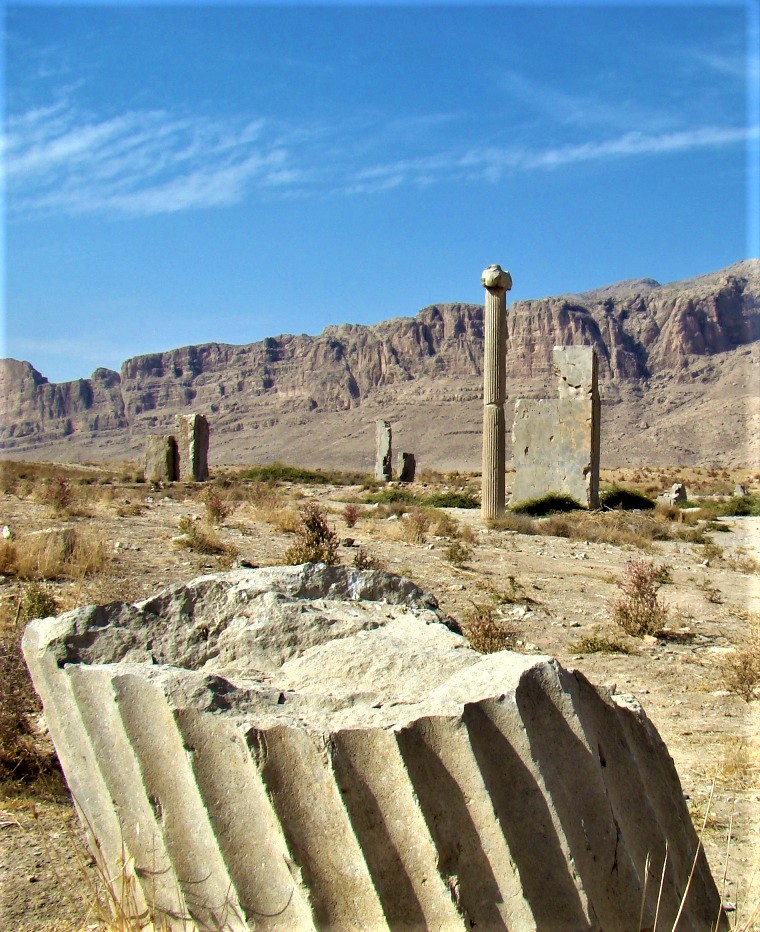Istakhr City Introduction
In the ancient times, around the present-day Shiraz, there was a prosperous and densely city full of beauty and passion of life. Istakhr city where indescribable excitement awoke everyday with the sunrise, and every night, would fall sleep with the pure moonlight. In this city life flowed with all its ups and downs, and all the joys and sorrows it knew. But now, only ruins remain of all the delight and splendor for our age and era.
The ancient city of Takht-e Tavoos (the peacock throne) or Istakhr which is one of the magnificent and astonishing manifestation of antiquity in Persia, with historical relics and buildings that show the originality of the civilization living in this region. The existence of this unique city dates back to the Achaemenid period in which of course, evidence has been found that which confirms the similarity of the structures of this city with other relics left from the Achaemenid period.

Istakhr City During Sassanid
Istakhr was considered as an important political and religious center in the Sassanid period at the first centuries of the Islamic period which the Islamic texts make a relative knowledge of it possible in the mentioned centuries. After moving the center of Sassanid rule to Bishapoor and then to Tisfoon, Istakhr gradually lost its importance to the Sassanid rulers. With all that, it remained as a religious center and the place of coronation of kings, as well as the regional center of Persia until the end of the dynasty.
Perhaps it’s interesting to know that the ancient city of Takht-e Tavoos or Istakhr is completely unknown in terms of geographical location. In fact, it is mentioned in historical books of an ancient city called the Istakhr or Takht-e Tavoos (the peacock Throne), but it’s not said that where exactly it is located. One of the reasons for the lack of an exact address for this ancient city seems to be that in the past there may not have been accurate means of recording geographical location.
Another is that perhaps the tools and instruments used in the past to determine the geographical location were different from today’s tools and instruments. For example, one of the scales used in the past to determine geographical location was the distance of the city from other surrounding cities.

The Ancient Story of the City
The ancient city of Istakhr or Takht-e Tavoos was inhabited in ancient times and was the residence of a significant number of people. The best evidence to support this claim is historical books. One of these pure books is the book Masalak al-Malik, written by Abu Zayd Balkhi.
Based on these writings, it is clear that the ancient city of Istakhr or Istakhr in the distant past, especially in the period of ancient Persia, enjoyed a worldwide reputation, and perhaps today can be said to have been the center of civilization and capital of that time. It has been invaded and fought, first as a thriving city, then as a small town, then as a soulless village, and after it has merged with the desert, and now only traces of a great civilization remain. These remnants include columns and blackboards that tell many secrets while silent.

